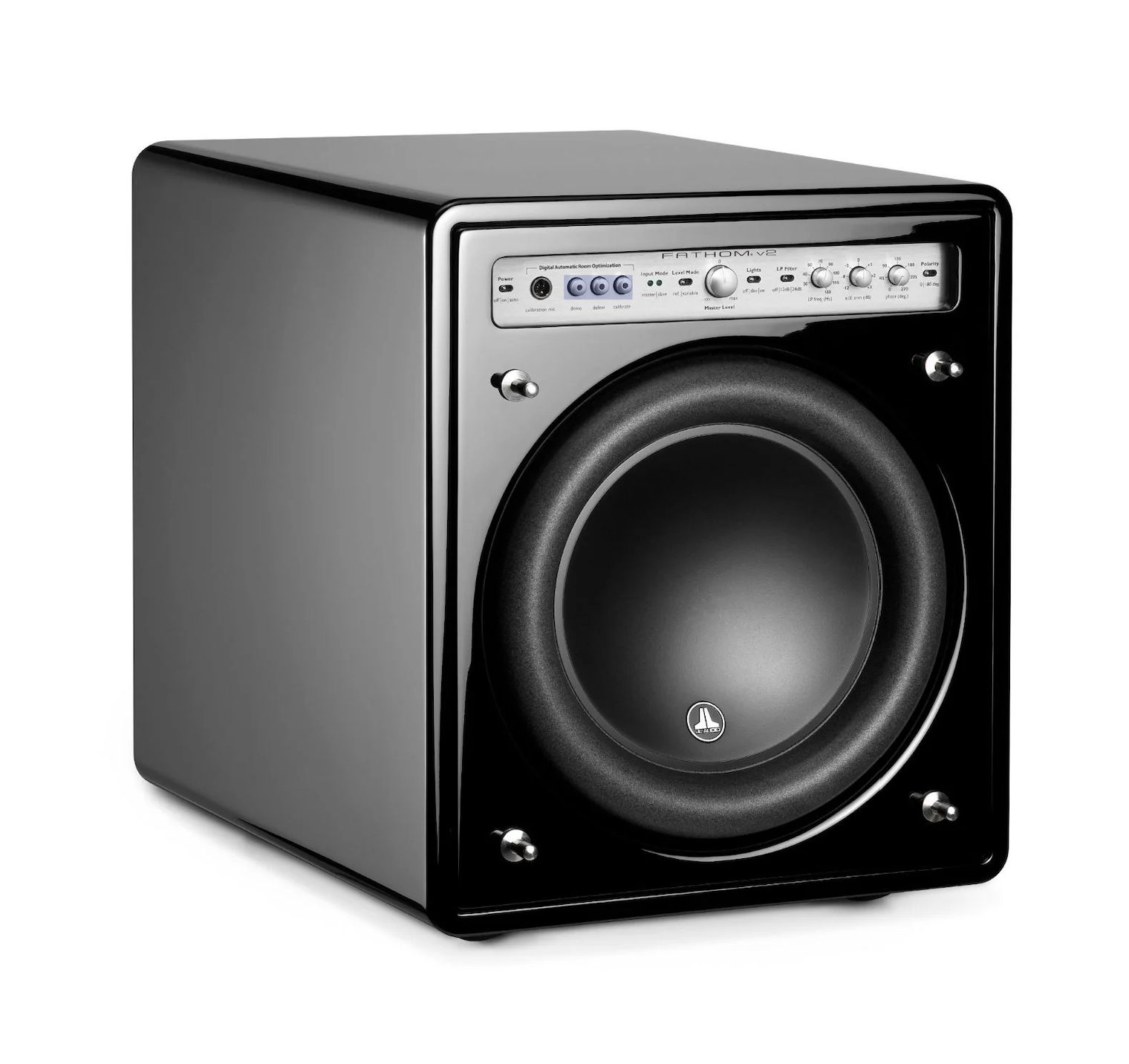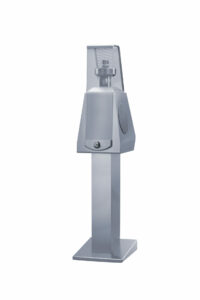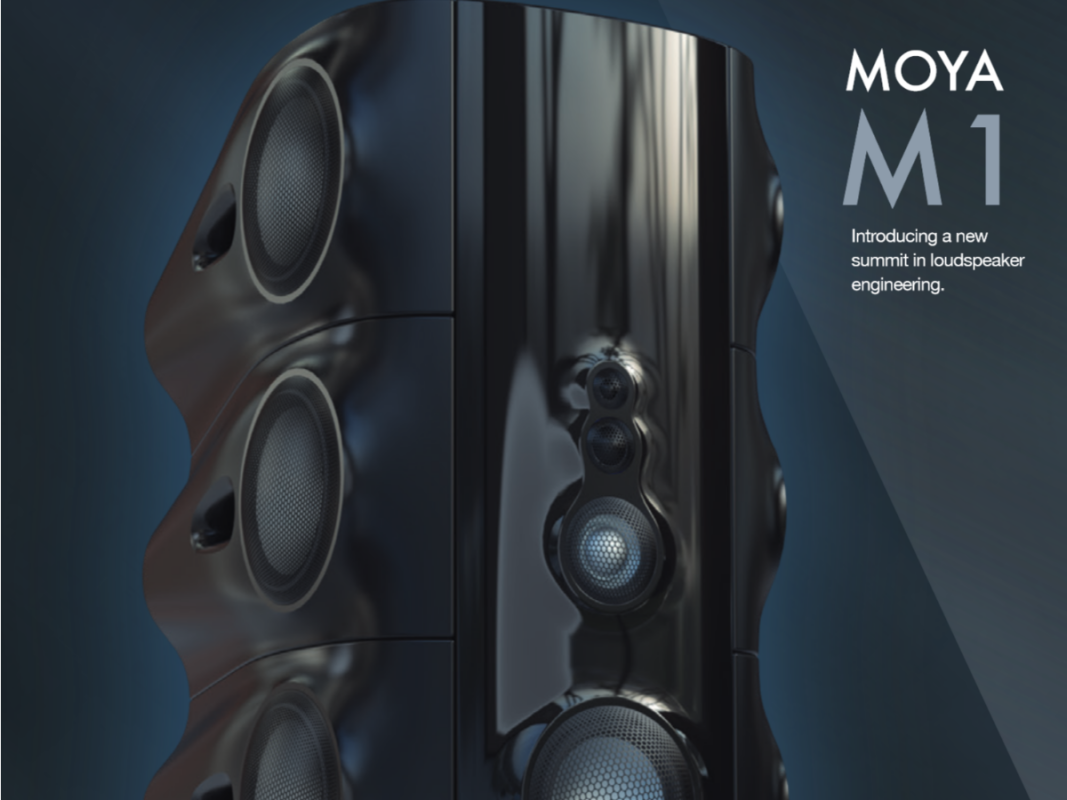
Subwoofers are great for home theater. They make the walls and floor shake and give the audience that visceral feel as depth charges from U-571 explode. I love a good action movie as much as anyone, and my requirement is simple: Something has to blow up. I want to feel it as much as see it. There are a lot of subwoofers out there that can accomplish this. Not much finesse here, just brute force. Subwoofers were introduced into the home market for this purpose alone. They were not integrated into a high-end two-channel system. When attempted, the result was typically degradation of sound quality rather than enhancement. There were a couple of reasons for this. First, the subwoofers were designed to go boom, not convincingly play the bottom octave of an upright bass. Second, home-theater processors were designed for an LFE (low-frequency effects) output from the movie mix. This second point started to change, though, and manufacturers of home-theater processors added settings for integrating the subwoofer with two-channel audio playback. It still sounded terrible, because the subwoofers and processing had not yet evolved to convincingly integrate the subwoofer(s) with the main speakers. Suffice to say, in these early days it was very easy to hear that a subwoofer was added—usually not in a good way.
I recall being at CEDIA in 2004 when JL Audio was entering the home market. Its technology and build-quality were already impressive for a newcomer, but in a way, they really weren’t that new. JL Audio had been around since 1975 and was rooted in the car-audio industry. The car-audio folks held some crazy competitions to push the limits of what could be done, one being SPL drag racing. It required holding a tone for 5 seconds. The world record was 185.4dB. I’ve heard of companies using Volvos with reinforced doors and special glass to achieve those kinds of SPLs. No one is in the car when these competitions happen, as their ears would bleed out—literally. Knowing this and seeing the very impressive drivers at the JL booth made it a sure thing that its product could go BOOM! At the time I wondered how well a car-audio manufacturer would do in the home-audio industry.
While I was running my former company, Rives Audio, we had a number of clients using JL subwoofers, but at the time it was all for home theater. None of them were using the JL subs for two-channel music. Those that were doing two channels were “purists” and would not consider the blasphemy of adding a subwoofer to their high-end audio system. Times have changed.
So, Who Is JL Audio?
Since its inception in 1975, JL has expanded from car audio to marine and mobile sports and most recently, in 2004, to home audio. I had the pleasure of speaking with Brett Hanes and Doug Henderson of JL Audio. Brett is VP of Acoustic Research and in charge of IP for JL Audio, where he has worked since 1994. Doug joined JL in 2018, as Senior VP of Home Audio. He has an impressive background with several positions in home audio, including President of B&W for North America.
I had to know where the JL came from. The J is Jim Birch who cofounded JL Audio, while the L is Lucio Proni. Lucio was the technical brains, with a background in car audio, and he remains highly involved in product development. Jim has pivoted into an HR role which is significant for a company that now employs 700 people in three separate offices from Washington state to Florida.
JL’s journey in the home market is one of purposeful evolution. It has, of course, leveraged some of the technology developed for the car market, but the challenges of home audio are quite different. One distinct advantage car audio gave them was very robust design parameters. The car market tends to be rather abusive on speakers and, in particular, subwoofers. Looking at a JL subwoofer certainly leaves the impression of robust overbuilding. But the advantage doesn’t stop there.
In 2004, when it entered the home market, JL made all its own drivers. It currently holds 45 patents on subwoofer technology. Its woofers have the robust build-quality mentioned, with motors capable of maintaining linearity at all volume levels. JL’s introduction into the home market was the Fathom subwoofer, including the Gotham. These were powered subs with analog amplification. JL increased its product offerings in 2013 with the E-Subs, which had a unique driver topology: The front panel is part of the driver. This sub also had JL’s first switching power supply. Also in 2013, JL introduced its IWS (In-Wall Sub), both the single and dual models. The IWS takes a unique approach to the category in that the enclosure hangs in the wall cavity like a pendulum. The natural frequency for the pendulum is around 2–3Hz, so it does not have any effect on the sound quality but does eliminate interaction with the wall. The Dominion line of subwoofers was introduced in 2015 as a lower-cost version of the E-Sub. In 2017, JL introduced an 8-inch version in the IWS line.
Suffice to say that JL Audio continues to develop new products but at a reasonable cadence. Its developments are real, not just a new look or upgrade claim. These are significant additions and changes, but the one that I think may be the most significant is the introduction of the Fathom V2 line. The V2’s most important change is the digital processing. JL went from an analog parametric EQ to Digital Automatic Room Optimization (DARO). This is an 18-band digital equalizer that can be automatically calibrated in a matter of minutes with the included microphone. Given my background in room acoustics and low-frequency equalization, I was very keen to put DARO to the test and measure the results with the Rives Audio BARE (Bass and Room Evaluator) software.
Problems to Be Solved for High-End Two-Channel Integration
Before getting into the details of setup, it’s important to understand the challenges of integrating a subwoofer (or two) into a high-end two-channel system. First is the subwoofer itself. What kind of transient response will it have compared to the speakers it will be mated to? Sealed enclosures can suffer from significant vacuum and resistance on the driver, causing a slow response time. Ported enclosures, on the other hand, can have turbulence when moving so much air through the port. JL Audio wanted to create as small a box as possible with high output and chose a sealed enclosure and lots of power. This is one reason it chose an analog amplifier with a traditional power supply. Most will think this is a bit odd for a subwoofer, but it’s very difficult to build a switching amplifier capable of the high output needed for this configuration. While the f110v2 only uses 1.1kW, the f113v2 has a 3kW amplifier and the Gotham a 4kW one.
The second issue has to do with integration. How does this different speaker integrate seamlessly with high-end main speakers when it has a different driver, different amplifier, and different placement in the room? Ideally, we would like the subwoofer to disappear, integrating so well that you don’t even realize that a subwoofer(s) has been added to the system. Most would agree that this becomes more difficult with faster-responding mains speakers (think planar speakers, like Magnepan or MartinLogan). The difficulty continues to increase as the crossover frequency between the mains and subwoofer is increased.
Setup
Two subwoofers are far easier to integrate than one. I had previously used a larger single subwoofer with my system. One disadvantage is that the subwoofer has to be in mono and in my setup cannot be centrally located. While it worked well in terms of providing those lower notes, it was audibly an extra speaker and not completely blended with the mains. In previous systems, I had two subwoofers near the main speakers, dedicated to the left and right channels to complement each speaker. This worked far better.
I expected integrating two f110 subwoofers would be much easier than integrating the single sub I had, and to some degree this was true. However, this does require integrating two devices, so there is more time involved. Honestly, the JL subwoofers required a little more time and attention to get them set up as accurately as possible. This was in part because I could not place them symmetrically due to room and space constraints.
Before beginning a more intensive setup, I did a basic setup by ear, and let the subwoofers burn in for about a week. During that time, I kept reducing the volume, and I suspect internal resistance was reduced over time, thereby increasing the overall efficiency and output of the subwoofer.
JL Audio has a very good white paper on set-up procedures, and I’ll summarize the process. The first step is simple: Use the JL supplied microphone and cable to calibrate each subwoofer independently in the room. Plug it in, place the microphone at the listener position, and press calibrate. Two minutes of low-frequency noises, and, voila, the JL DARO system has calibrated the subwoofer to the room.
The next step involves integrating the subwoofer to the main speakers. Using one channel at a time, select the crossover frequency. I’m using Talon Hawks as mains, which use Accuton drivers and a labyrinth design to increase efficiency and transient response. This configuration is very fast and will definitely present a challenge in integrating subwoofers. The Talons roll-off pretty sharply around 35Hz, so this is where I brought the subs in. The second step is to set the levels of each speaker (meaning the sub and main for one channel) at the crossover frequency to 80Hz. Well, I didn’t have a 35Hz track, so I used tone-generator software on my computer, which worked well. The next step is to set the variable-polarity knob to zero and invert the polarity to 180 degrees via a switch. Then from the listening chair with a tone at the crossover frequency playing (and this is where I had to get creative with some other software) rotate the polarity very slowly until you get a null. This requires two people, one listening and one turning the knob. Or in my case, one person, as I used a microphone and some test equipment. Once you find the null, you will then switch the polarity switch back to zero.
This procedure makes sense, and it also takes into account any latency that might exist in filtering or processing. Thus, it’s not enough to merely calculate the distance variations and fraction of wavelength to assign a polarity value. After I was done, I used the Rives Audio BARE software to verify the results. Frankly I was shocked at how flat the response was down to 20Hz on the left channel and nearly flat with a slight roll-off on the right channel. I’ve measured a lot of speakers and subwoofers in a lot of rooms, and this was really impressive.
Listening: “The Best Subwoofer Is No Subwoofer”
This is one of the classic arguments in high-end audio. Subwoofers always call attention to themselves, which is fine for action movies, but not okay for two-channel music. I’ve done demonstrations at tradeshows with subs that were made by the same manufacturer and was able to integrate the subs so completely that people did not believe there was a subwoofer…until I turned the sub off. That was the “wow” factor. All the sound seemed to be coming solely from the main speakers, but once the subs were turned off, the bottom end was lost.
I decided to start with possibly the most difficult piece of music—Eberhard Weber’s “Concerto for Bass” on Endless Days, an ECM recording that’s exceptional. The harmonics and resonance traverse the crossover point, and it’s a piece I use regularly to expose non-linearities in low-frequency crossover points. The system sounded like a pair of speakers that were full and much larger than they actually are. The integration was exactly what I wanted. This sounded like there was no subwoofer, until you turned it off. With the subs off, the presentation was lean and uninviting.
While that piece was great, it does not have any transients in it. I used several pieces to test for transient performance—Janis Ian’s “Tattoo,” Jennifer Warnes “Way Down Deep,” Holly Cole’s “One Trick Pony,” and Jane Monheit’s “Honey Suckle Rose.” All have challenging bass riffs, and all of these were reproduced convincingly. There was no way to detect the location of the subs or even if they were playing, but what was notable aside from the added extension and output of the bass was the entire presentation. Consistently, the soundstage was far wider than had previously been the case, and the instrument location and timbre, even those instruments clearly well above the crossover point, were all more realistic.
Conclusion
The JL Audio f110v2 subwoofers punch well above their weight class. That such a small package can integrate with such speed, finesse, and low-frequency extension is remarkable. Every piece of music I threw at the subs demonstrated improvement in all aspects, not just those one would associate with a sub. The soundstage improved, placement of instruments improved, and overall musicality was transformed in a way far beyond my expectations. If you have speakers that are just not up to the low-frequency task, like many monitors and planars, and want musicality that does not degrade the sound quality—look no further. JL has the answer.
Specs & Pricing
Enclosure type: Sealed
Enclosure finish: Black gloss
Frequency response: 27–111Hz (±1.5dB); –3dB at 25Hz; –10dB at 19Hz
Effective piston area: 60 sq in.
Effective displacement: 160 cu in.
Amplifier power: 1.1kW short-term
Inputs: Balanced and single-ended, mono or stereo
Level control: Reference (fixed) or variable
Filter slopes:12/24dB/octave
Polarity: 0/180 degrees
Phase: Variable, 0–280 degrees
Extremely low frequency trim: Variable, –12dB to +3dB at 28Hz
Dimensions: 12.92″ x 12.92″ x 17.27″
Price: $4000 each
JL Audio
jlaudio.com
By Rives Bird
More articles from this editorRead Next From Review
See all
GoldenEar T66
- May 17, 2024

High-End Audio Buyer’s Guide 2024: MBL 126
- May 17, 2024

Burmester 175 Turntable
- May 14, 2024

DS Audio DS-W3 Optical Cartridge
- May 10, 2024


















